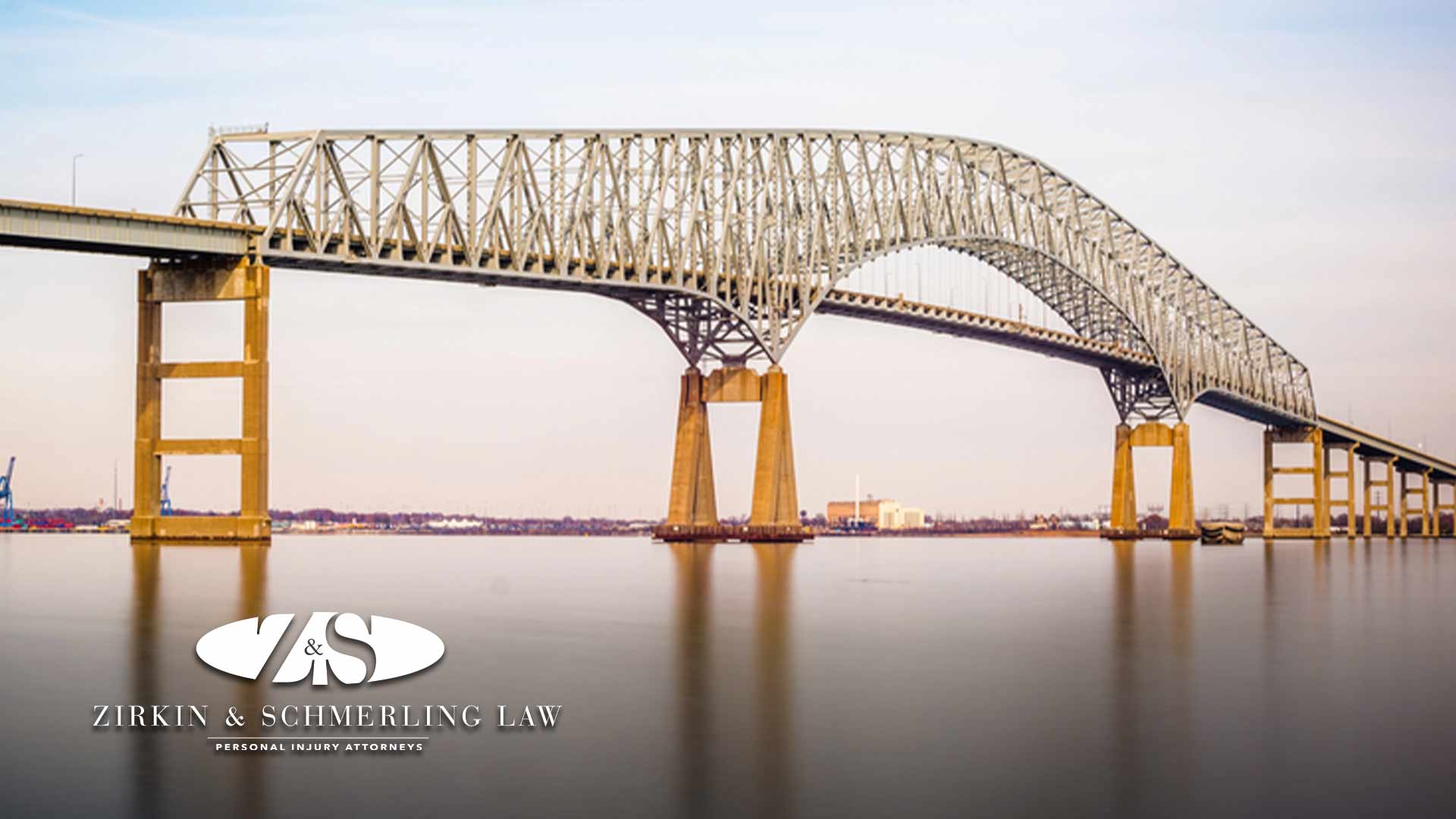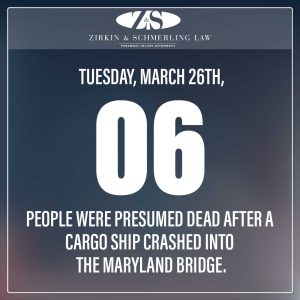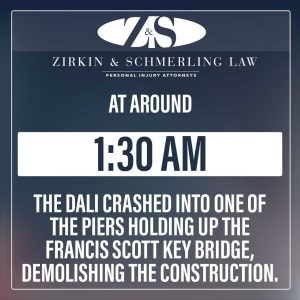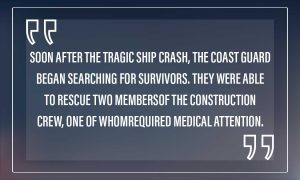
The Francis Scott Key Bridge accident shocked the United States last week, as the iconic Baltimore bridge has served as an integral part of our state’s infrastructure since the 1970s. More importantly than the bridge itself are the victims of this unthinkable tragedy.

If you’re unfamiliar with what happened on Tuesday, March 26th, six people were presumed dead after a cargo ship crashed into the Maryland bridge. Since the night of the accident, divers have found two of the deceased victims, Alejandro Hernandez Fuentes and Dorlian Ronial Castillo Cabrera. The four remaining victims have yet to be found.
State and federal authorities are still investigating the events surrounding the Baltimore bridge accident, but information regarding the cargo ship and the bridge’s infrastructure has come to light. This information may raise questions regarding negligence. Here’s what we know about the tragedy at the Maryland bridge.
Events Leading Up to the Collapse of the Baltimore Bridge in Maryland
At around 1:00 a.m., the cargo ship known as the “Dali” routinely exited Baltimore’s harbor. Those piloting and directing the ship reportedly followed standard practices during this time.

A few minutes before the crash took place, the Dali lost power. The ship immediately sent out a “mayday” to Baltimore officials so that they could stop traffic from entering the bridge.
The ship regained power through its backup supply, but the vessel never regained its propulsion system. Due to its lack of propulsion, the Dali drifted in the direction of the Francis Scott Key Bridge.
The captain of the ship steered the ship to the left and released the vessel’s port anchor to avoid the collision. Tragically, he and his crew were unable to prevent the impact. At around 1:30, the Dali crashed into one of the piers holding up the Francis Scott Key Bridge, demolishing the construction.
Fortunately, Baltimore officials had quickly closed off traffic from entering the bridge, likely preventing many injuries and deaths. That said, a construction crew was still on the bridge filling in potholes at the time of impact. The eight workers fell into the Patapsco River.
Francis Scott Key Bridge Rescue Efforts

Soon after the tragic ship crash, the Coast Guard began searching for survivors. They were able to rescue two members of the construction crew, one of whom required medical attention.
Tragically, the divers weren’t able to find the other six crew members. Eventually, they halted their search due to dangerous water conditions. The Maryland State Police superintendent, Col. Roland L. Butler Jr., announced that the divers wouldn’t be able to continue through the night due to dangerous currents and debris.
By that time, the remaining six crew members were presumed dead due to the Patapsco River’s dangerously cold temperatures.
Conditions of the Dali Cargo Ship
The Dali’s lack of propulsion led it on a crash course to the Baltimore Bridge. The ship was flying with a Singapore flag and was on its way to Colombo, Sri Lanka.
The Singapore-based company Grace Ocean reportedly owns the Dali, and a company called The Synergy Marine Group manages the vessel. Further, it was chartered by the Danish shipping company Maersk.

Interestingly, this is not the first crash that the Dali has experienced. It collided with a quayside in Antwerp, Belgium in 2016.
Additionally, the ship was reportedly found to have a deficiency in 2023. During an inspection at the port of San Antonia in Chile, those inspecting the vessel found deficiencies regarding the Dali’s “propulsion and auxiliary machinery.”
It is certainly too early to draw any conclusions based on this information, but authorities will continue investigating the factors that may have contributed to or caused this fatal accident.
Concerns with the Francis Scott Key Bridge
In addition to concerns regarding the Dali, some have speculated that the Francis Scott Key Bridge didn’t have sufficient safeguards to prevent this tragedy. Some engineers have stated that the Baltimore bridge may have lacked fenders around its pylons and piers.
Fenders are essentially safety devices intended to protect the structural integrity of bridges by absorbing impact. It seems that the Francis Scott Key Bridge didn’t have a conspicuous fender system. If the bridge lacked fenders, the piers were vulnerable in the event of a crash.
Once again, the details regarding this accident are still coming to light, and it’s unclear whether someone was at fault. Maryland and federal authorities will continue investigating if anyone was negligent in this accident and whether it could have been prevented.
Contact a Baltimore Attorney
If you knew someone who died in this catastrophe, we are so sorry for your loss. Nothing can make a victim’s friends and family truly whole again after such a tragedy.
Those who lose family members in these types of accidents are often able to recover wrongful death damages. These damages compensate victim’s families for losses, including funeral and burial costs as well as loss of income.
If you believe you’re entitled to wrongful death or personal injury damages, don’t hesitate to contact the attorneys at Zirkin & Schmerling by calling 410-753-4611. We offer free consultations and can help you get started with your case.
